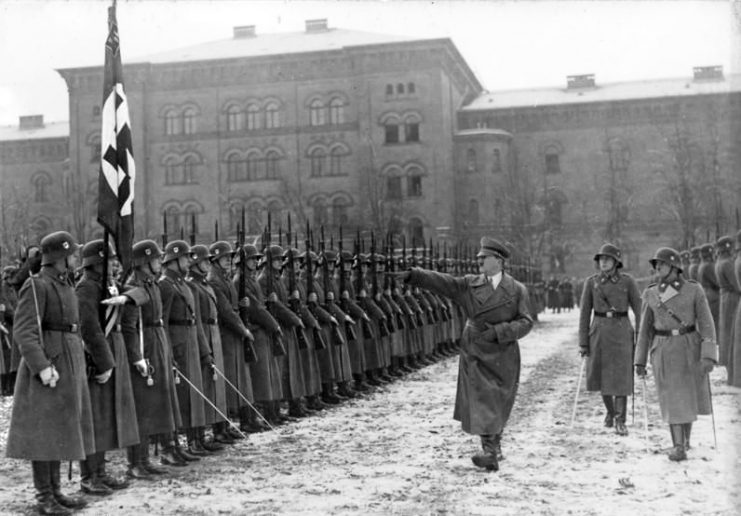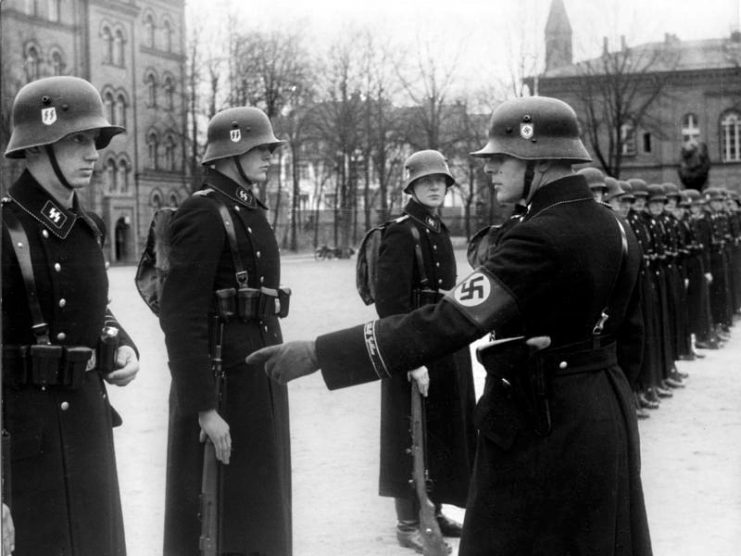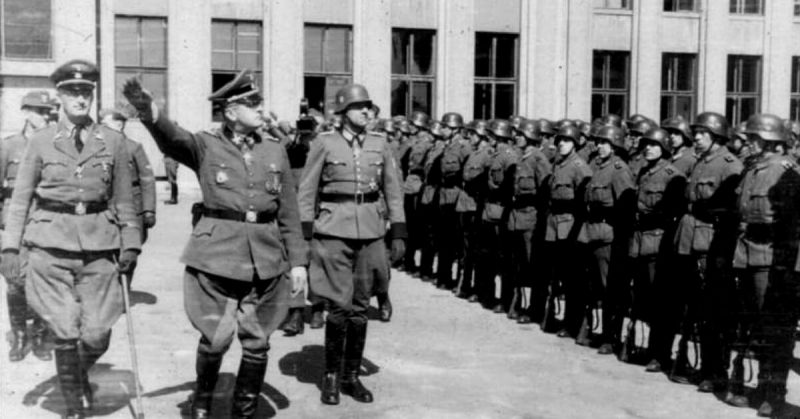Of the thousands of Germans who belonged to the Einsatzgruppen, a Nazi squad assigned to exterminate Jews and dissidents on the spot of their discovery, eight men who have been proven to have assisted are still living without having to face legal consequences for their actions.
Two of the men have been located, both in their 90s. Both have admitted to being a part of Einsatzgruppe C but one claims to have been a truck mechanic and guilty of no murders while the other refuses to discuss his part in the war. Their full names have not been made public as they have not been officially charged.
The Einsatzgruppen, translated to “deployment groups”, was formed in 1939 by Heinrich Himmler, head of the SS and German police with the approval of Adolph Hitler before the practice of mass transportation of Jews to concentration camps. There were three units, A, B and C, each assigned to a specific part of central Europe and the Soviet Union. They were originally given general orders to eliminate high-level Jews and Poles but it wasn’t long before all Jews, Gypsies, Freemasons, religious leaders, communists and anyone suspected of opposing the Third Reich were targeted.
Although Germany had entered into a non-aggression agreement with the Soviet Union in 1939, Hitler grew more and more suspicious of Stalin and instigated Operation Barbarossa in 1941, never intending to honor the agreement. The Nazis invaded on June 22, 1941, under orders from Hitler to “annihilate” the Soviet Union. This proved to add additional opportunities to exercise “ethnic cleansing”. Orders were quickly adapted to allow the Einsatzgruppen to exterminate entire towns including women and children and especially the disabled.

In many instances, the residents were marched out of town and made to surround large ditches. Most of the Jews were forced to disrobe before the march in order to humiliate them, and all were shot at point-blank range in the back falling into the ditches which became mass graves. Others were beaten to death in the middle of town with dead bodies littering the streets. Many of the murders were committed by townsfolk recruited by the Nazis with offers of exception, food, and clothing for their families. Typically, they were the last to end up in the bloody trenches. Nazi propagandists used these events to take graphic pictures and video of the elimination of what they called Jewish “scum” to share with the public and further reinforce the need to exterminate the entire race. The victims were robbed of their valuables, including gold fillings in their teeth. The stress caused by constant killing did take a toll on some participants causing Himmler to order the creation of a mobile gas chamber. The unit, built on a converted cargo truck was used mainly in late 1941 and traveled along with the Einsatzgruppen.
According to the late Professor David Cesarani, a research professor at Royal Holloway, University of London, and a member of theTask Force for International Cooperation on Holocaust Education, “What happens in the Soviet Union … is ethnic cleansing of the kind that the Nazis have been practicing elsewhere [but] on a more lethal scale. It also fits in with their plans for the destruction of much of the population of the Soviet Union. So what is the difference between engineering the starving to death of 900,000 people in Leningrad and shooting to death 900,000 Jews? I would say that the techniques are different but they are part of the same plan, which is to depopulate the Soviet Union of undesirable populations, populations unworthy of life. Useless mouths.”

The identification of the surviving members of the Einsatzgruppen was completed in 2014 from the Simon Wiesenthal Center in Jerusalem, but prosecutors at the Central Office of the State Justice Administration for the Investigation of National Socialist Crimes in Baden-Württemberg have yet to charge any of them. Joschka Fischer, a member of a foundation for the Babi Yar Holocaust Memorial Center in Kyiv questions why it is taking so long to formally charge the surviving members but the head of the Central Office in Germany claims there is not enough evidence to press charges and membership in the Einsatzgruppen does not prove guilt. University of Cologne law professor Cornelius Nestler does not accept that explanation claiming that the men could at least be charged with abetting murder as membership required aiding mass murder. Perhaps the Central Office is dragging their feet regarding arrests due to the advanced age of the participants which Efraim Zuroff, the head of the Simon Wiesenthal Center in Jerusalem calls “appalling”.
A three-part documentary on Netflix, Einsatzgruppen: The Nazi Death Squads, describes and illustrates the Einsatzgruppen horrors in detail including interviews with witnesses but the viewer must be warned that many of the actual videos taken during the war are graphic and may be quite disturbing to sensitive viewers.
